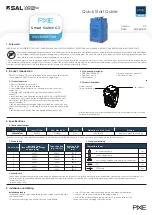
1-3
In the absence of subnetting, some special addresses such as the addresses with the net ID of all
zeros and the addresses with the host ID of all ones, are not assignable to hosts. The same is true for
subnetting. When designing your network, you should note that subnetting is somewhat a tradeoff
between subnets and accommodated hosts. For example, a Class B network can accommodate
65,534 (2
16
– 2. Of the two deducted Class B addresses, one with an all-one host ID is the broadcast
address and the other with an all-zero host ID is the network address) hosts before being subnetted.
After you break it down into 512 (2
9
) subnets by using the first 9 bits of the host ID for the subnet, you
have only 7 bits for the host ID and thus have only 126 (2
7
– 2) hosts in each subnet. The maximum
number of hosts is thus 64,512 (512 × 126), 1022 less after the network is subnetted.
Class A, B, and C networks, before being subnetted, use these default masks (also called natural
masks): 255.0.0.0, 255.255.0.0, and 255.255.255.0 respectively.
Configuring IP Addresses
An interface needs an IP address to communicate with other devices. You can assign an IP address to
a VLAN interface or a loopback interface on a switch. Besides directly assigning an IP address to the
VLAN interface, you may configure the VLAN interface to obtain one through BOOTP, or DHCP as
alternatives. If you change the way an interface obtains an IP address, from manual assignment to
BOOTP for example, the IP address obtained from BOOTP will overwrite the old one manually
assigned.
This chapter only covers how to assign an IP address manually. For the other two approaches, refer to
DHCP Configuration
in the
IP Services Volume
.
This section includes:
z
Assigning an IP Address to an Interface
z
IP Addressing Configuration Example
Assigning an IP Address to an Interface
You may assign an interface on the Switch 4510G multiple IP addresses, one primary and multiple
secondaries, to connect multiple logical subnets on the same physical subnet.
Follow these steps to assign an IP address to an interface:
To do…
Use the command…
Remarks
Enter system view
system-view
––
Enter interface view
interface interface-type
interface-number
––
Assign an IP address to
the interface
ip
address
ip-address
{
mask
| mask-length
} [
sub
]
Required
No IP address is assigned by default.
















































